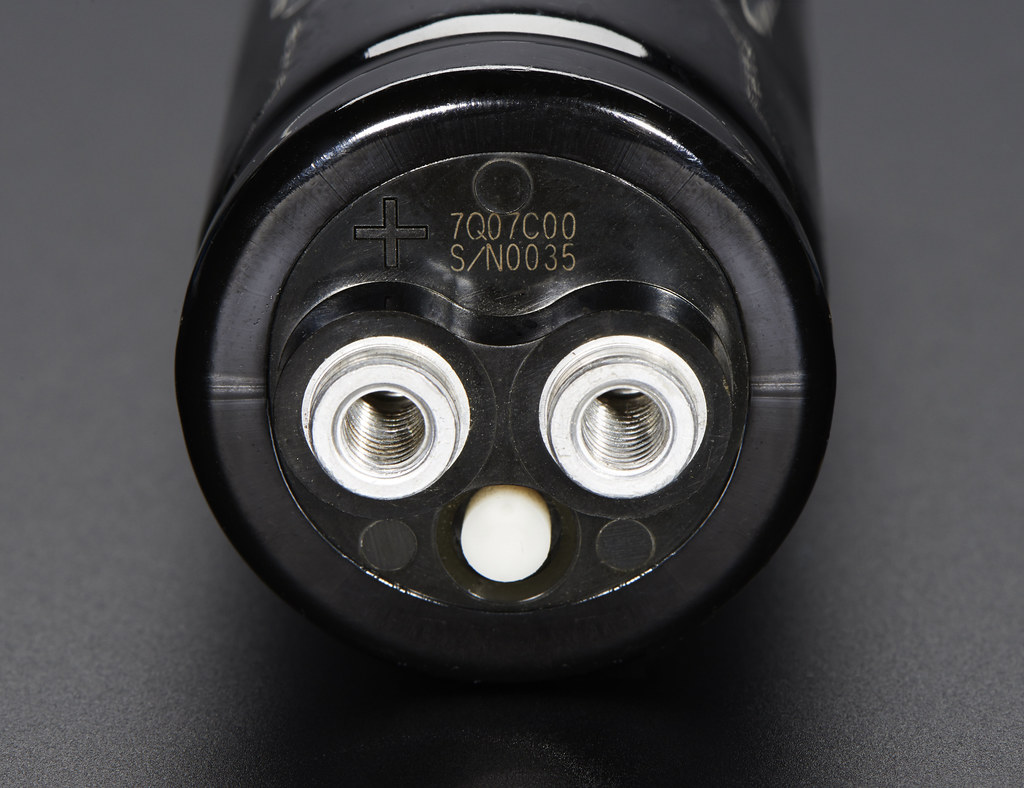image by Adafruit
However, supercapacitors are usually misunderstood, as they do not substitute batteries but offer a functionality for which most applications used to resort to them: short term (i.e. less than 1 minute) power storage. Also, do not confuse supercapacitors with graphene-based ultracapacitors, which do in fact have the potential to make chemical batteries obsolete.
In this post I will cover the main differences between supercapacitors and batteries (e.g. lead-acid and LiPo/LiIon batteries), and show you a quick equivalence formula to compute how big a supercapacitor must be to replace a given battery.
Supercapacitor properties
As I said, supercapacitors are usually misunderstood, as they are not intended to store energy for a long period of time like a battery, but provide a mean to store energy just as a normal capacitor does. Only that it stores several magnitudes of more energy, and does so without loosing the capacitors advantages, such as short charge times and high output power. Therefore, supercapacitors are an ideal option to provide energy during power surges (e.g. supercapacitor in SSD drives for brownout protection), or build small gadgets that can be easily recharged but to not require to store energy while not in use (e.g. a crank flashlight).
In other words, a supercapacitor is just a huge capacitor, which gives it following cahacteristics:
source: Wikipedia and BatteryUniversity.com
To compute the equivalence between a battery and a capacitor, we compare the energy each that can be stored in each. Once we know the equivalence, we are only left with making shure that our replacement capacitor has the same voltage and power ratings than the battery we want to replace.
In other words, a supercapacitor is just a huge capacitor, which gives it following cahacteristics:
Supercapacitor equivalence to a battery
To compute the equivalence between a battery and a capacitor, we compare the energy each that can be stored in each. Once we know the equivalence, we are only left with making shure that our replacement capacitor has the same voltage and power ratings than the battery we want to replace.
The energy stored in a battery, under relatively slow discharge (to ignore losses like heat-up and the such) is:
Where Q is the capacity of the battery measurend in mAh and V its nominal voltage rating (you can usually find this information on the side of the battery).
And the energy stored in a (super)capacitor is:
Where C is the capacity of the capacitor measured in Farad, and V the voltage you are going to charge it up to. Note that you will want to charge the voltage to the maximum voltage of the battery when fully loaded (depending on the chemistry, around 20% above the battery's nominal voltage).
Therefore, if we compare both energy equations for the same voltage, the equivalent capacitor to a battery with capacity Q would have a capacity C so that:
For example, the equivalent capacitor to substitute a 1000mAh LiPo (3.7V) battery would need a capacity of:
You see, to replace a small (1000mAh) LiPo battery, you need a "huge" supercapacitor, which you can attain for example by connecting several superacapitors in parallel, as the biggest suppercacitors I have seen so far only go up to about 100F for a maximum of 10V (again, you need to take into account the battery's maximum voltage).

No comments :
Post a Comment